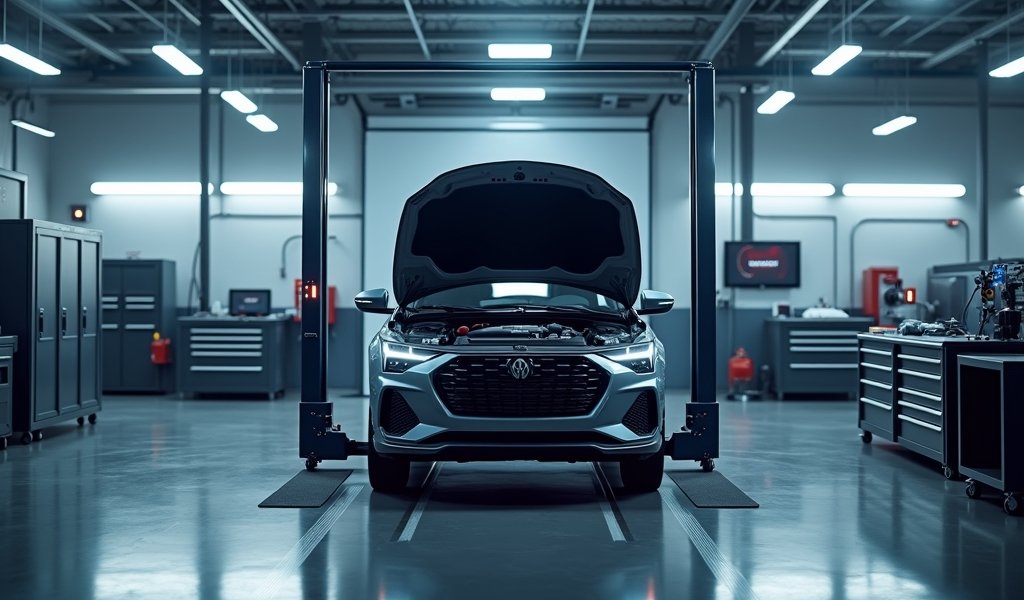Overview
This article evaluates five leading gas price apps for road trips (GasBuddy, Waze, Gas Guru, AAA Mobile, and Upside), highlighting their unique features, benefits, and ideal use cases to help travelers save money on fuel costs. Strategic use of these apps can save travelers $20-50 on a typical 1,000-mile road trip, with additional savings possible when combined with proper planning, reward programs, and credit card benefits.
Table of Contents
- Why Gas Price Apps Matter for Road Trips
- GasBuddy: The Road Tripper’s Fuel Companion
- Waze: Navigation and Gas Savings in One Package
- Gas Guru: Color-Coded Savings at a Glance
- AAA Mobile: More Than Just Gas Prices
- Upside: Cashback Approach to Fuel Savings
- Best Apps Based on Your Road Trip Needs
- Maximizing Your Savings on the Road
- Conclusion
- Frequently Asked Questions
Planning a road trip but worried about fuel costs eating into your adventure budget? You’re not alone. With gas prices constantly fluctuating, finding the cheapest fuel along your route can lead to substantial savings. Here in Grand Rapids, Michigan, we’ve seen how the right gas price app can make the difference between an economical journey and one that breaks the bank.
Modern gas price apps have evolved far beyond simple price listings. Today, they offer real-time updates, route planning capabilities, reward programs, and community-verified information that ensures you’re getting the most accurate data possible. Let’s dive into the best gas price apps for road trips that can help keep your tank full and your wallet happy.
Why Gas Price Apps Matter for Road Trips
As a mechanic who’s helped countless drivers prepare for long road trips, I can tell you that fuel costs are often underestimated. A seemingly minor price difference of 20 cents per gallon becomes significant when multiplied across multiple fill-ups during a cross-country journey.
Consider this: In a vehicle with a 15-gallon tank averaging 25 MPG, a 1,000-mile trip requires about 40 gallons of fuel. Finding gas just 30 cents cheaper per gallon saves you $12 per fill-up, or potentially $24+ over the course of your journey. That’s enough for a decent meal or attraction admission!
Gas price apps offer three critical benefits:
- They help you avoid price gouging in tourist areas or isolated stations where prices can be inflated by 50+ cents per gallon
- They allow for strategic planning, ensuring you fill up in lower-priced regions
- They eliminate the stress of driving on fumes while searching for affordable options in unfamiliar territory

GasBuddy: The Road Tripper’s Fuel Companion
GasBuddy has earned its reputation as the go-to gas price app for good reason. After using it personally on dozens of road trips, I’ve found its crowdsourced approach remarkably effective, particularly in populated areas.
Standout Features
- Price filters by fuel grade (regular, mid-grade, premium, diesel)
- Map and list views with sorting by price or distance
- Trip cost calculator that estimates your total fuel expenses
- “Pay with GasBuddy” card offering up to 25¢ per gallon in savings
What I particularly appreciate about GasBuddy is its timestamp feature. When you’re road-tripping through less populated areas, knowing when a price was last reported helps gauge reliability. In my experience, price reports less than 24 hours old are generally accurate, while older ones may have changed.
GasBuddy’s reward program, “GasBack,” provides additional savings through rebates when shopping with partner merchants. For dedicated road trippers, these rebates can accumulate to meaningful amounts over time, essentially giving you free gas for purchases you might make anyway.
The app’s interface is straightforward enough for anyone to use, making it my top recommendation for road trippers of all ages. You can quickly spot price variations with just a glance at the map, perfect for making quick decisions while navigating unfamiliar territory.
Waze: Navigation and Gas Savings in One Package
Waze stands out by brilliantly integrating navigation with fuel price information, eliminating the need to switch between apps while driving. This is particularly valuable during long trips where safety should be a priority.
Why It Works for Road Trips
Waze’s approach is elegant in its simplicity. Once you’ve set your route, you can tap the gas pump icon to see stations directly along your journey—not just nearby, but specifically on your path. This prevents those frustrating detours that sometimes end up costing more in time and fuel than you save.
The community-based reporting system means prices are updated by actual drivers passing stations. In busy corridors, this can mean near real-time updates. I’ve often found prices reported within the hour on major routes, though coverage becomes spotty in remote areas.
The integration with Waze’s traffic and hazard alerts creates a seamless experience. You might discover, for instance, that the cheapest gas is just before a major traffic jam—allowing you to make informed decisions about whether the savings are worth potential delays.
While Waze doesn’t offer the reward programs of dedicated gas apps, its primary advantage is reducing distraction. According to the National Highway Traffic Safety Administration, distracted driving claimed 3,522 lives in 2021. Minimizing app-switching with Waze’s all-in-one approach contributes to safer road trips.
Gas Guru: Color-Coded Savings at a Glance
Gas Guru takes a visual approach to price comparison that I find particularly helpful when making quick decisions. The app uses a color-coding system that instantly shows price ranges: green for lowest prices, yellow for middle range, and red for highest.
Visual Appeal and Practical Benefits
This color system might seem simple, but when you’re tired from hours of driving, being able to process information visually rather than reading numbers can be a genuine blessing. I’ve found this especially useful when road-tripping through unfamiliar cities where focusing on navigation already demands attention.
Gas Guru stands apart by sourcing data from the Oil Price Information Service (OPIS), a professional fuel price reporting agency, rather than relying solely on user reports. This often results in more comprehensive coverage in areas with fewer app users.
The app also offers historical price tracking, allowing you to see price trends at specific stations. This feature has helped me identify stations that consistently price competitively versus those that fluctuate wildly, which can be useful information when planning return routes.
While Gas Guru lacks the bells and whistles of GasBuddy’s rewards program or Waze’s navigation, its clean, uncluttered interface focuses exclusively on what matters: finding affordable fuel quickly and efficiently. For drivers who prefer simplicity and reliability over feature-richness, Gas Guru delivers exactly what’s needed.
AAA Mobile: More Than Just Gas Prices
For AAA members planning extensive road trips, the AAA Mobile app offers a compelling package that extends well beyond gas prices. While not exclusively focused on fuel costs, it integrates price information with a comprehensive suite of road trip tools.
Member Benefits and Broader Functionality
The gas price data in AAA Mobile comes directly from OPIS, ensuring professional-grade accuracy. While updates might not be as frequent as crowdsourced apps in some areas, the information tends to be reliable and comprehensive when available.
What sets AAA Mobile apart is its integration with other essential road trip services:
- TripTik route planning with points of interest
- Roadside assistance access with GPS location sharing
- Exclusive discounts on hotels, restaurants, and attractions
- Approved auto repair facility locator
During a recent cross-country journey with clients from Grand Rapids, the combination of gas price information with hotel discounts actually saved more than fuel hunting alone would have. The seamless integration of their roadside assistance feature also provided peace of mind when traveling through remote areas with spotty cell service.
The app effectively functions as a complete road trip companion rather than just a gas price tool. For AAA members already paying dues, leveraging these integrated features makes practical sense, even if the gas price component alone isn’t as robust as dedicated apps.

Upside: Cashback Approach to Fuel Savings
Upside (formerly GetUpside) takes a fundamentally different approach to saving money on fuel. Instead of merely helping you find the lowest advertised price, it offers cashback rewards for purchases at participating stations, sometimes resulting in greater net savings despite higher initial prices.
How the Cashback Model Works
The app displays available cashback offers at nearby gas stations, often ranging from 5¢ to 25¢ per gallon. After purchasing fuel, you submit a photo of your receipt through the app, and cashback accumulates in your account, available for withdrawal once you reach the minimum threshold.
What makes Upside interesting for road trips is the potential for significant cumulative savings. During a recent 2,000-mile journey with a client’s road trip-friendly SUV, we averaged about $3 cashback per fill-up, totaling nearly $24 in savings over the entire trip.
The cashback model requires a different mindset: you’re looking for the best final price after rebate, not the lowest advertised price. This sometimes means stopping at a station with slightly higher display prices but generous cashback offers. The math can be counter-intuitive until you get used to it.
Upside’s primary limitation is coverage. While expanding rapidly, it doesn’t have the universal reach of GasBuddy or Waze. Before relying on it for a road trip, check coverage along your planned route. I’ve found it has stronger partnerships in urban and suburban areas than in rural regions.
Best Apps Based on Your Road Trip Needs
After extensive testing across thousands of miles of American highways, I’ve found that different trip styles benefit from different apps. Here’s my mechanic’s-eye breakdown of which app suits various road trip scenarios:
Best Overall App: GasBuddy
For most road trippers, GasBuddy offers the most comprehensive package. Its massive user base ensures up-to-date information practically everywhere, and the optional payment card provides consistent savings regardless of location. The trip cost calculator also helps with budgeting, a feature many travelers appreciate.
Best for Urban/Interstate Travel: Waze
If your journey primarily follows major highways and passes through metropolitan areas, Waze’s integration of navigation and fuel prices is unmatched. The real-time traffic information combined with gas prices along your route creates an efficient, distraction-minimizing experience.
Best for Rural Exploration: GasBuddy + Gas Guru
For those venturing into less populated areas, I recommend a combination approach. GasBuddy’s large user base helps with coverage, while Gas Guru’s OPIS-sourced data fills gaps where user reports might be scarce. This dual-app strategy has saved numerous clients from anxiety-inducing low fuel situations in remote regions.
Best for Reward Maximizers: Upside + Station-Specific Apps
Dedicated savings hunters should consider pairing Upside with apps from major chains like Shell, BP, or Circle K. This combination allows you to stack discounts—using Upside’s cashback alongside loyalty programs from the stations themselves. I’ve seen savvy travelers save upwards of 40¢ per gallon with this approach.
Maximizing Your Savings on the Road
Beyond simply choosing the right app, several strategies can significantly enhance your fuel savings during road trips. These techniques have helped my clients save hundreds of dollars on extended journeys.
Strategic Fill-Up Planning
Don’t wait until your tank is nearly empty. Use gas apps to identify “zones” of lower prices along your route and fill up in these regions even if your tank isn’t close to empty. For example, filling up in rural Tennessee before entering tourist-heavy Gatlinburg can save 30-40¢ per gallon.
Many travelers make the mistake of filling up just off major highways without checking prices slightly further from exits. Stations visible from interstates often charge 10-15¢ more per gallon than those just a mile into town.
Combine with Credit Card Rewards
Pair your gas app strategy with a dedicated fuel rewards credit card. Many major cards offer 3-5% cashback on fuel purchases, which stacks nicely with app-based savings. This combination approach can effectively reduce your per-gallon cost by 25-40¢ when maximized properly.
Price Check Reliability
When relying on crowdsourced information, check the timestamp of price reports. As a general rule of thumb from my years of road trip experience:
- Prices reported within 3 hours: Highly reliable
- Prices reported within 24 hours: Generally reliable
- Prices reported 1-2 days ago: Use caution, especially during volatile price periods
- Prices older than 2 days: Consider unreliable unless in very stable markets
This simple verification habit has saved countless travelers from the disappointment of driving out of their way for outdated savings that no longer exist.
Conclusion
The right gas price app can transform your road trip experience, potentially saving you significant money while reducing the stress of finding affordable fuel in unfamiliar territory. For most travelers, GasBuddy remains the most versatile option, while Waze offers the best integration with navigation needs.
Based on our experience with vehicles of all types in Grand Rapids and beyond, strategic use of these apps on a typical 1,000-mile road trip could easily save you $20-50 on fuel costs alone. When combined with proper vehicle maintenance, these savings can be even greater due to improved fuel efficiency.
Remember that the most effective approach often involves both technology and planning—knowing when and where to fill up can be just as important as finding the lowest price. With these digital tools at your disposal, you can focus less on fuel costs and more on enjoying the journey and destinations that make road trips so memorable.
Whether you’re planning a weekend getaway from Grand Rapids or a cross-country adventure, implementing these app strategies will help keep more money in your wallet for experiences rather than expenses. Safe travels and happy savings on your next road trip!
Frequently Asked Questions
How much money can I really save using gas price apps on a road trip?
On a 1,000-mile road trip, you can typically save $20-50 using gas price apps strategically. Savings increase with longer trips and when combined with reward programs or cashback offers.
Which gas price app works best in rural areas with limited cell service?
GasBuddy generally performs best in rural areas due to its offline capabilities and large user base. Gas Guru is a good backup option as it sources some data directly from OPIS rather than relying solely on users.
Can I use multiple gas apps at once to maximize savings?
Yes, many road trip veterans use a combination approach—Waze for navigation and initial gas spotting, then GasBuddy or Upside for specific savings opportunities. This strategy maximizes both convenience and savings potential.
Do gas price apps drain my phone battery quickly?
Apps like GasBuddy and Gas Guru consume minimal battery when used occasionally for price checks. Navigation-based apps like Waze use more power due to continuous GPS tracking, so consider using a car charger during extended usage.
Are gas prices on these apps always accurate?
Gas prices are generally accurate when recently reported but can become outdated, especially in areas with fewer users. Always check the timestamp showing when the price was last updated for the most reliable information.

